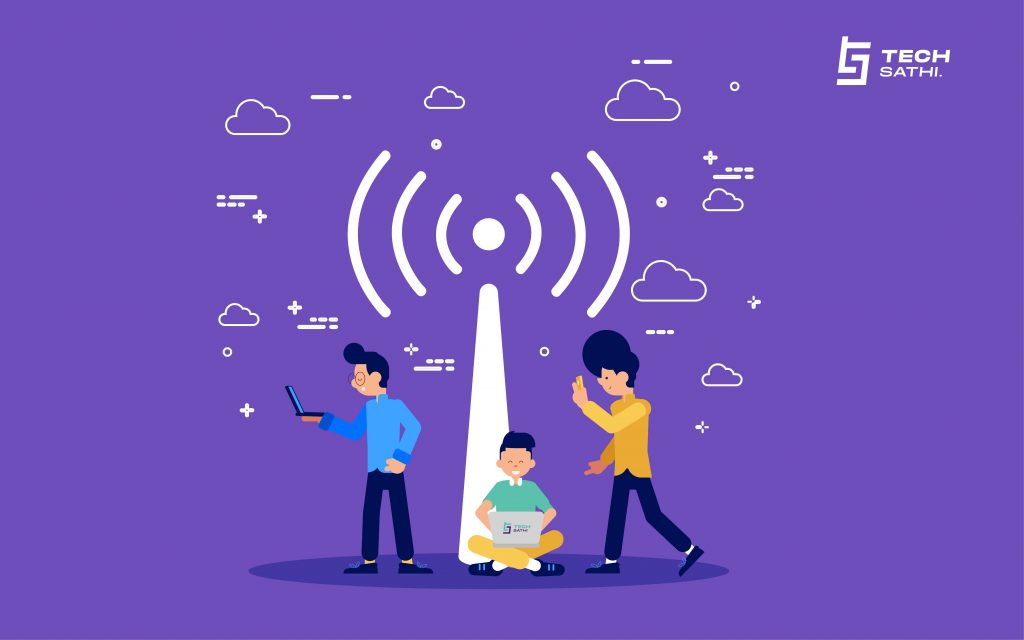Technological advancement has introduced the world to the internet network, equipping it with the ability to re-invent our lives. The impact of Coronavirus (COVID-19) pandemic on our lives and how people are coping with it globally has demonstrated the importance of having access to digital connectivity.
Amidst the pandemic, disregard of quality of service, the internet has been an ultimate tool in Nepal as well to continue to stay connected with their friends and family while maintaining a physical distancing. The bitter fact that remains is though consumers from urban areas have many options for broadband connectivity, many people in rural Nepal still lack reliable data service in rural areas as internet service providers (ISPs) basically focus urban centers. The far-flung villages of the country are still deprived of this service for which they are experiencing the bitter realities of digital divide or isolation.

Digital Nepal and digitization; these words have been creating a good buzz for a long period of time. Yet, when it comes to implementation and delivery, progress is happening at a snail pace. Cost of data connection too, despite the National Broadband Policy envisioning to reduce it drastically, it has not happened so till date. It is also a kind of normal problem to see customers complaining about poor service.
Access to Quality Data Service Missing
Every citizen has the right to access the Internet and fully utilize it. Thus, its affordability accessibility must be kept in top priority. To make the internet accessible and create a more reliable network, internet service providers also need to invest in new and better infrastructure. There is also a need for significant investment and costs in making internet network architecture possible in rural parts of the country.
A remote connection site costs more than what it does in urban areas for which the government should also think of promoting the investment of ISPs in such areas or invest resources from the Rural Telecommunications Development Fund (RTDF) for expanding broadband to rural areas. It is unfortunate that even as the government invested billions of rupees in the optical fiber expansion projects to develop it as the backbone for Digital Nepal, the project is moving very slow, making rural population to wait for more time to take benefit from access to broadband.
The country’s telecommunications sector in a way has witnessed a remarkable expansion of infrastructure and they are providing wireless data connectivity contributing to increase access to data. However, the prevailing state of broadband connection leaves big room for improvement, underlining the need of linking it with public service delivery to the education and health sector to name a few. Studies have revealed that Nepal’s data speed is comparatively poor, and the cost is also high.
Broadband and ICT development Strategies
It is not that the government has done nothing. There are nice policies such as ICT Policy, National Broadband Policy, E-governance Master Plan, Wireless Broadband Master Plan, and Digital Nepal Framework.
In ICT policy, the government has targeted to ensure broadband access to 90% and internet access to all the population of the country within 2020. Similarly, there are targets to provide 80% of public focused services online and make 75% of the population digitally literate by 2020. Similar types of targets have been set in the broadband policy that focuses on increasing access to high-speed internet and giving benefits to people.
Likewise, in Digital Nepal Framework, there are several innovative projects which can contribute to accelerating the digitization process. However, first, it takes time for policy formation, and when projects get implemented it takes years to complete. A clear example is ongoing optical fiber projects to connect district headquarters which was originally planned in 2009. It will still take two more years to complete as announced the budget for the next fiscal year.
For many reasons like these, the country has been left behind in the digital race. Access to broadband internet is no more luxury as it supports in socio-economic development. Studies have shown that high-speed internet has been proved as a powerful tool for the delivery of essential services such as education and healthcare, and also offers opportunities for women’s empowerment and contributes to enhanced government transparency and accountability.
Benefits from High-speed Connectivity
This COVID 19 situation has been the best example for the whole world on how the internet can be best used for digitization. In a way, in case of Nepal, the health crisis contributed to speed up development in the ICT sector with people working from home, children learning via virtual class, people buying things online, using social media and various online tool to keep in touch with people while maintaining social distancing to contain the spread of the coronavirus.
Though children in urban areas are attending online classes, students from poor urban families, rural and remote parts of the country are unable to continue study for issues like lack of affordable connectivity, access to data, and devices among others. The government data shows that over 70% of the population is in access to broadband services—fixed, fixed wireless, and mobile. However, the impact of access to these services has not reflected in the economy. This also means; there is a strong need to diversify the use of broadband in multiple sectors for development in the ICT sector.
With a large number of Nepali returning home from international labor markets amid this pandemic and people also becoming jobless in multiple sectors, broadband can help create jobs in the ICT sector and also support in catalyzing job skill development. This will also contribute towards leaving a comparatively low impact on the economy and support in poverty reduction.
The challenge is to make broadband accessible to all as targeted in the policies. Thus, the government should focus on increasing high-speed data access, diversifying the use of broadband by making it reliable and affordable, also keeping in mind the low-income families. For this, the government can reduce taxes on the internet service in Nepal and attract ISPs to go to rural areas, while ISPs need to focus on making available quality services to consumers.
These strategies and solutions will remain a myth until they are actually enforced and until strict action is taken to mitigate the challenges. What do you think should be done to mitigate these challenges and make the internet accessible and affordable to every part of Nepal?





